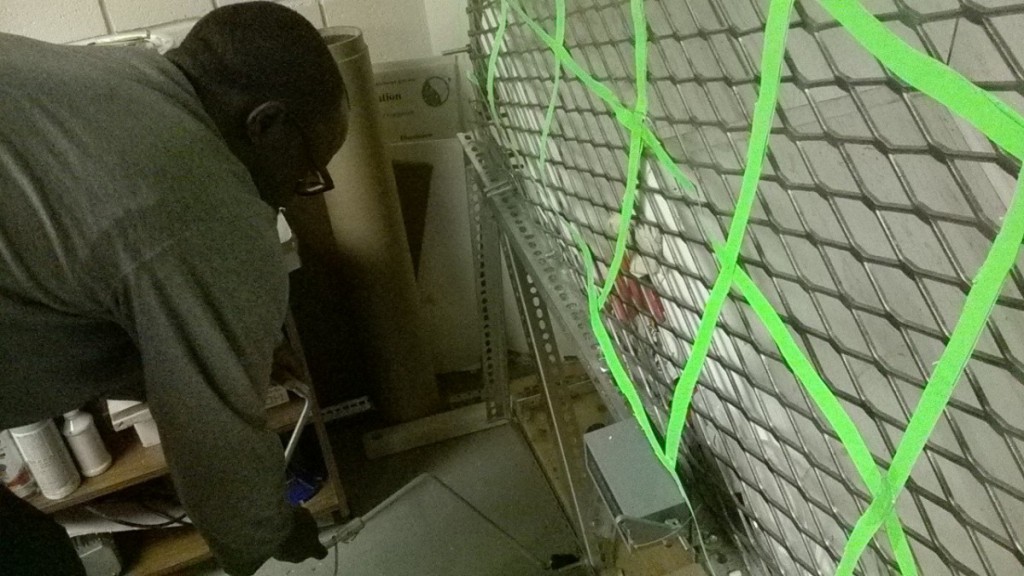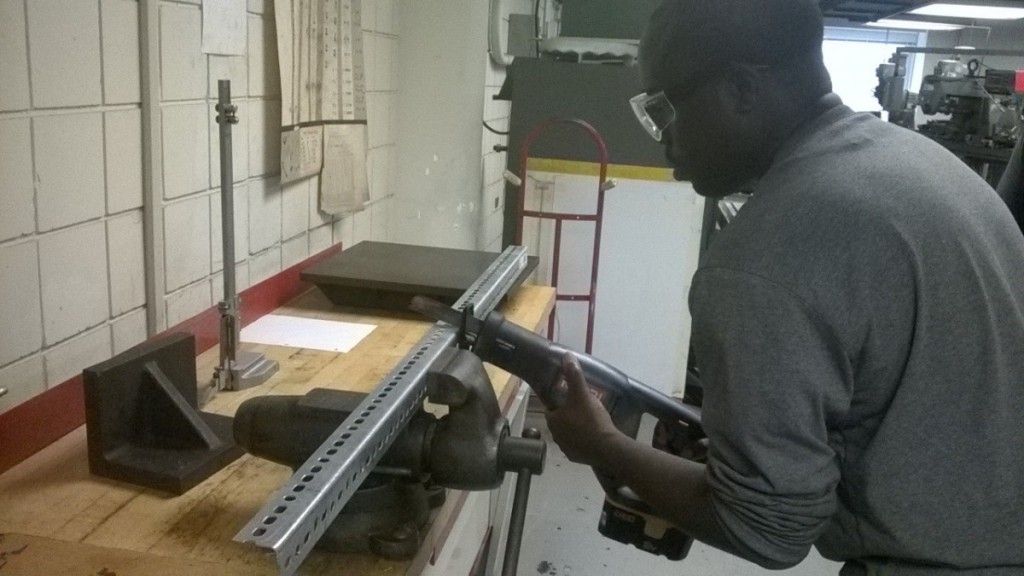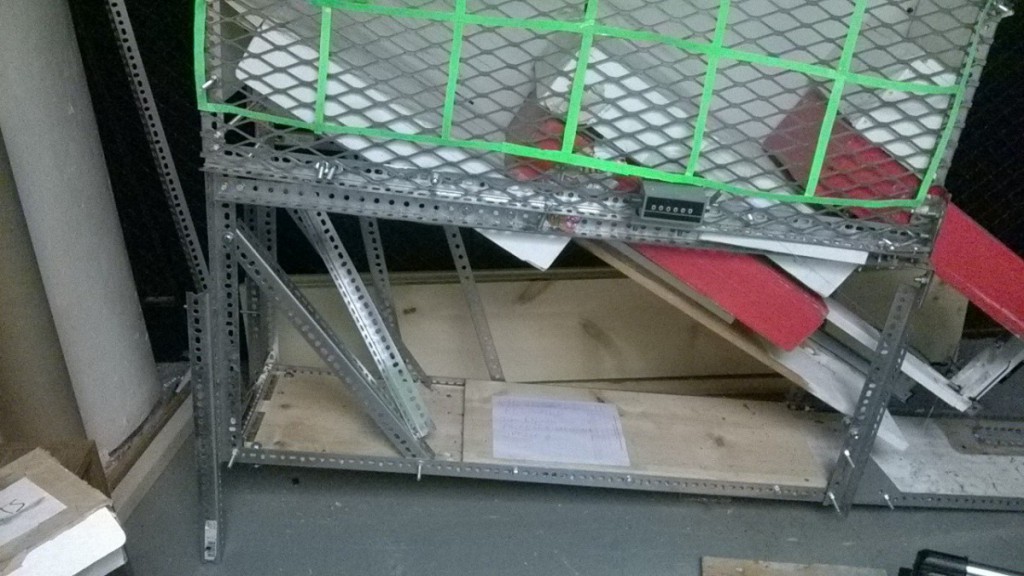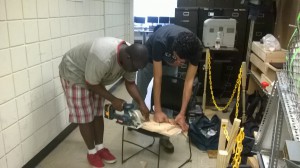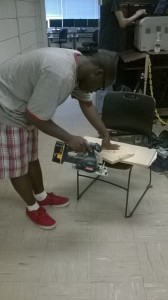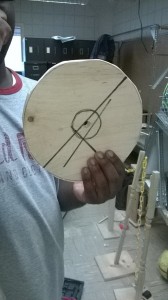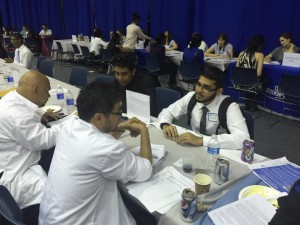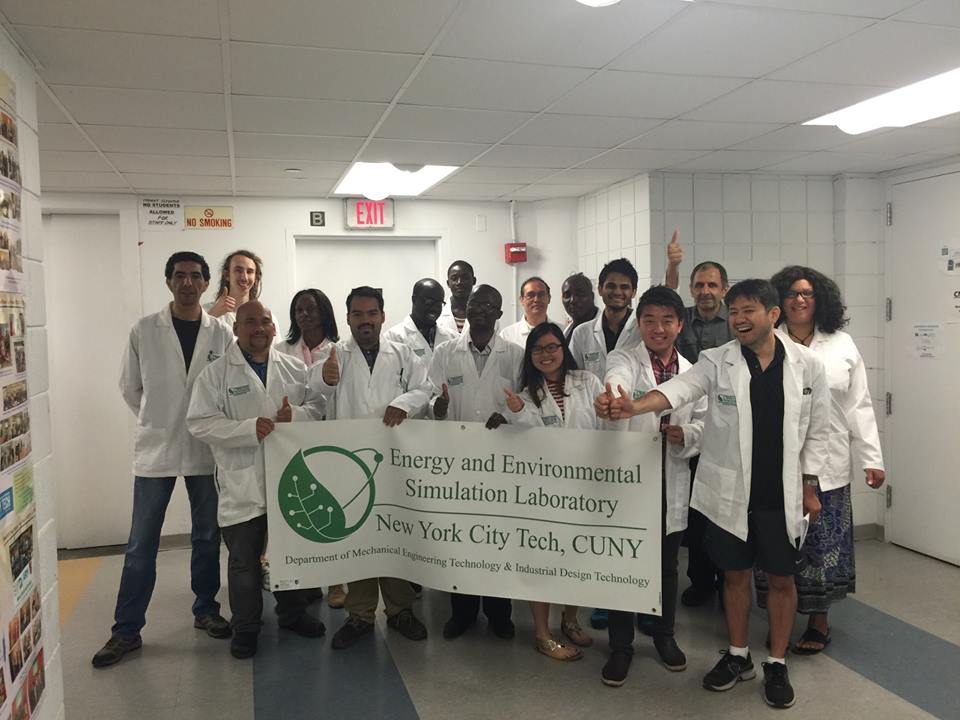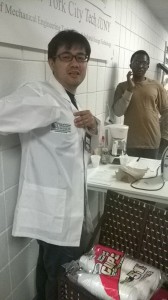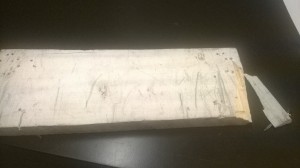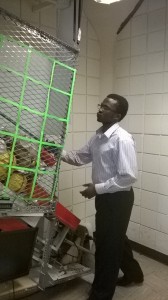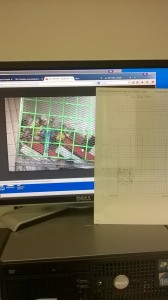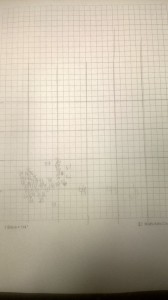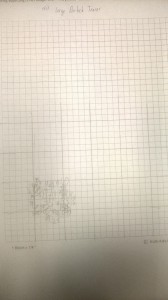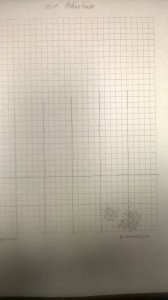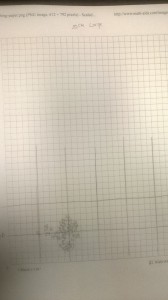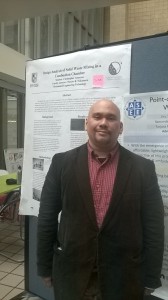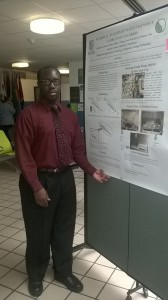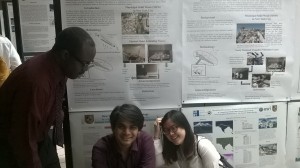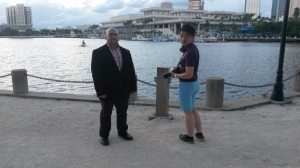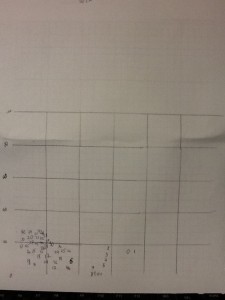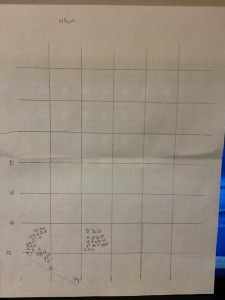We’ve had a lot of setbacks in the Spring and Summer in regards to the experimental work on the reverse acting grate. The plan is to create a more stable base and to keep things at a minimum. Ezra and Sayed moved the reverse acting grate back to 509 because the foyer in room 511A was too narrow to get a good video recording of the experimental work. Plus many of the students would walk through while we were recording.
Once the wheels were removed we wanted to keep the reverse acting grate in the proper angle where the grates were 13 degrees from the traveling bed and 26 degrees to the horizontal. Today Joshua and I lifted up the reverse acting grate and placed a jack underneath temporarily. The jack was adjusted until we got it at 26 degrees using the level app on my phone.
We took an L bracket, sawed it in half to create the legs that would support the reverse acting grate at it’s proper angle. Once the legs were attached, we removed the jack and everything looked stable. We will attach supports on the side to compensate for the reverse acting grate’s narrow width soon. Our plan is to finish the reverse acting grate before the end of the month to start doing serious experimental work.

